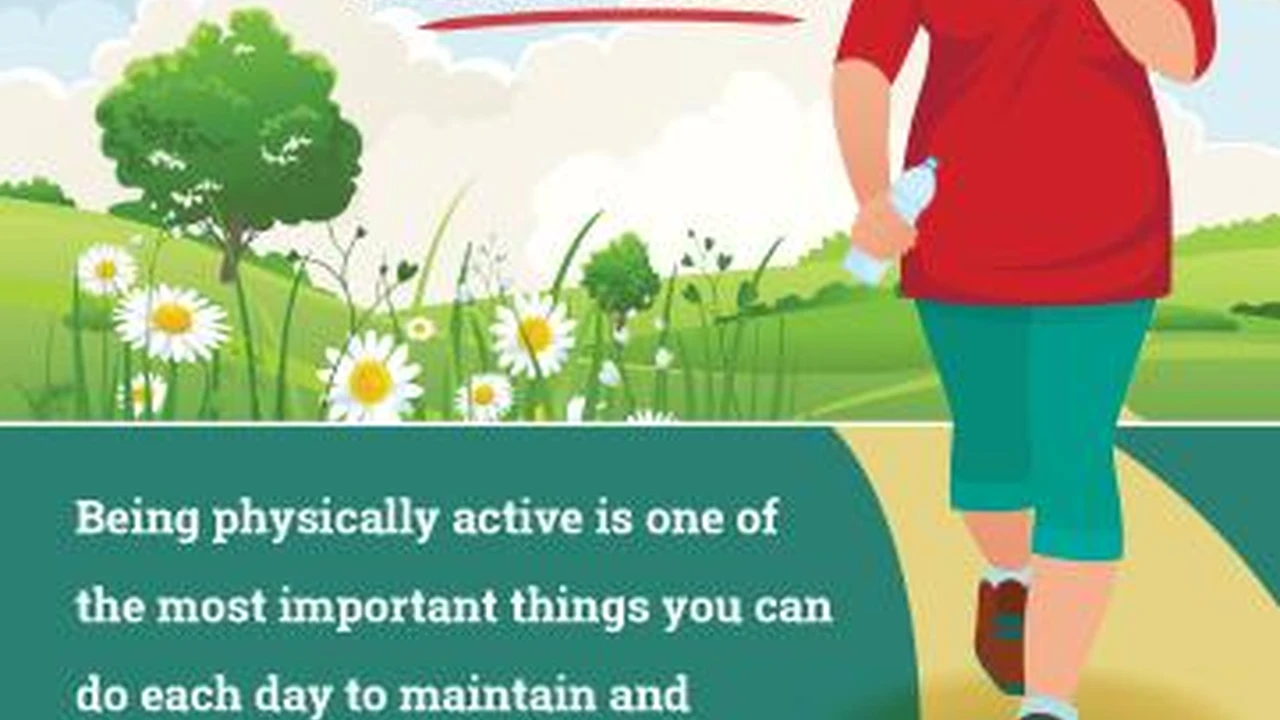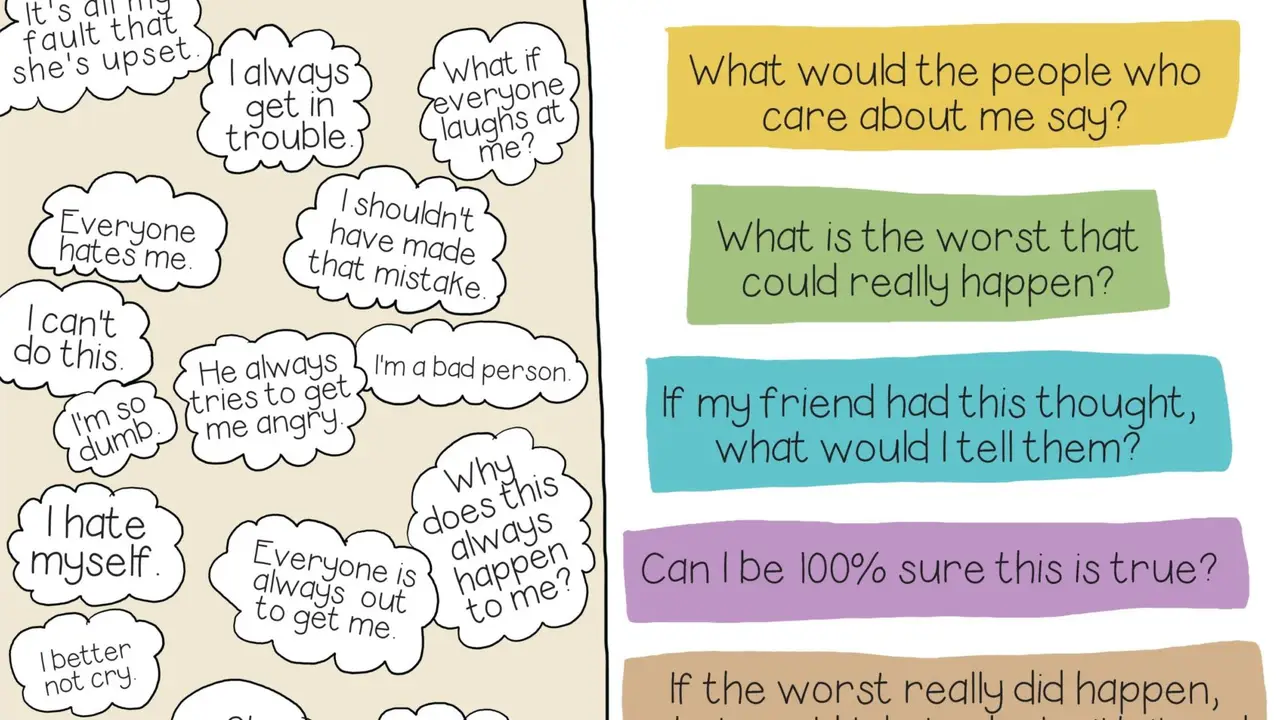How to Manage Cravings: Healthy Alternatives and Strategies
Sample meta description.

Understanding Cravings The Science Behind Them
Okay, so cravings. We all get them, right? That sudden, intense urge for a specific food – usually something not exactly on the healthy eating plan. But what's actually going on inside your body when a craving hits? It's not just about willpower; there's some serious science behind it.
Think of your brain as a complex control center. When you crave something, it's often due to a combination of factors: psychological, physiological, and even environmental. Let's break it down:
- Psychological Factors: Stress, boredom, sadness – these emotions can trigger cravings. We often turn to food for comfort, a learned behavior from childhood. That pint of ice cream after a bad day? Totally relatable.
- Physiological Factors: Hormones play a huge role. Ghrelin, the hunger hormone, increases appetite, while leptin signals fullness. Imbalances can lead to cravings. Also, nutrient deficiencies can sometimes manifest as cravings for certain foods. For example, a craving for chocolate might indicate a magnesium deficiency (though, let's be honest, sometimes it's just chocolate!).
- Environmental Factors: Seeing a commercial for pizza, smelling freshly baked cookies, or even walking past your favorite bakery – these environmental cues can trigger cravings. Our brains associate these cues with pleasure and reward, leading to that irresistible urge.
The key takeaway here is that cravings are complex. Understanding the underlying causes can empower you to develop effective strategies for managing them.
Identifying Your Triggers Pinpointing the Root Cause
So, you know cravings are complex, but how do you figure out *your* specific triggers? This is where a little self-reflection comes in. Think of yourself as a detective, investigating the mystery of your cravings. Here's how to start:
- Keep a Food Journal: This is crucial. Write down everything you eat, the time you ate it, and how you were feeling emotionally and physically before, during, and after. Be honest! Did you reach for that donut because you were stressed about a deadline, or because you were genuinely hungry?
- Track Your Mood: Note your stress levels, anxiety, and overall mood throughout the day. Are there specific times or situations when cravings are more intense?
- Pay Attention to Environmental Cues: What sights, smells, or places trigger cravings? Is it the candy aisle at the grocery store, the smell of popcorn at the movies, or your favorite TV show?
- Analyze Your Data: After a week or two, review your journal. Look for patterns and connections. Are there specific emotions, situations, or times of day that consistently trigger cravings?
For example, you might discover that you always crave salty snacks in the afternoon when you're feeling bored at work. Or that you reach for sugary treats when you're feeling stressed about your kids. Once you identify your triggers, you can start developing strategies to address them.
Healthy Alternatives Swapping Out Unhealthy Choices
Okay, you've identified your triggers. Now it's time to arm yourself with healthy alternatives. The goal isn't to completely deprive yourself (that usually backfires), but to find satisfying substitutes that won't derail your weight management goals. Let's look at some common cravings and healthy alternatives:
- Craving: Sugar
- Healthy Alternatives: Fresh fruit (berries, apples, pears), Greek yogurt with a drizzle of honey, a handful of dates, a smoothie with unsweetened almond milk and fruit.
- Why They Work: Fruit provides natural sweetness along with fiber, which helps regulate blood sugar levels and keeps you feeling full. Greek yogurt is packed with protein, which also promotes satiety.
- Craving: Salty Snacks
- Healthy Alternatives: Air-popped popcorn (lightly salted), a handful of almonds or walnuts, edamame, celery sticks with hummus, baked sweet potato fries.
- Why They Work: Popcorn provides a satisfying crunch without a lot of calories. Nuts are a good source of healthy fats and protein. Hummus is packed with fiber and protein, which can help curb cravings.
- Craving: Chocolate
- Healthy Alternatives: Dark chocolate (70% cacao or higher), a smoothie with cocoa powder and banana, a handful of cocoa nibs.
- Why They Work: Dark chocolate contains antioxidants and can satisfy your chocolate craving without the added sugar and unhealthy fats found in milk chocolate. Cocoa nibs provide a concentrated dose of chocolate flavor and antioxidants.
- Craving: Crunchy Foods
- Healthy Alternatives: Raw vegetables (carrots, celery, cucumber), apple slices, air-popped popcorn, whole-grain crackers.
- Why They Work: The satisfying crunch can help alleviate stress and provide a sensory experience. Plus, vegetables are packed with vitamins and minerals.
- Craving: Fatty Foods
- Healthy Alternatives: Avocado, nuts, seeds, olive oil, fatty fish (salmon, tuna).
- Why They Work: These foods provide healthy fats that are essential for hormone production and overall health. They also promote satiety and can help curb cravings for unhealthy fats.
Remember, the key is to experiment and find alternatives that you genuinely enjoy. Don't force yourself to eat something you hate just because it's healthy. The more you enjoy your healthy alternatives, the more likely you are to stick with them.
Strategic Strategies for Managing Cravings
Alright, you've got your healthy alternatives ready. Now let's dive into some practical strategies for managing cravings when they strike. These are your tools for fighting back against those urges!
- Distraction: This is a classic for a reason. When a craving hits, immediately distract yourself with something else. Go for a walk, listen to music, call a friend, read a book, or work on a hobby. The goal is to shift your focus away from the craving and give it time to pass.
- Delay: Tell yourself you can have the craving, but not right now. Set a timer for 15-20 minutes. Often, the craving will subside during that time. If it doesn't, you can still choose to indulge, but you'll be doing so with more awareness.
- Mindful Eating: If you do choose to indulge in a craving, do it mindfully. Savor each bite, pay attention to the texture and flavor, and eat slowly. This can help you feel more satisfied with a smaller portion.
- Hydration: Sometimes, thirst can be mistaken for hunger. When a craving hits, drink a glass of water. You might be surprised at how effective this is.
- Chew Gum: Chewing gum can help satisfy the oral fixation associated with cravings. Choose sugar-free gum to avoid added calories.
- Brush Your Teeth: The minty freshness of toothpaste can often curb cravings, especially for sugary foods.
- Get Enough Sleep: Lack of sleep can disrupt hormone balance and increase cravings. Aim for 7-8 hours of sleep per night.
- Manage Stress: Find healthy ways to manage stress, such as exercise, yoga, meditation, or spending time in nature.
The most important thing is to find strategies that work for you. Experiment with different techniques and see what helps you manage your cravings most effectively.
The Power of Mindful Eating Tapping into Your Inner Wisdom
We touched on mindful eating earlier, but it's such a powerful tool for managing cravings that it deserves its own section. Mindful eating is about paying attention to your food, your body, and your eating experience without judgment. It's about being present in the moment and tuning into your body's hunger and fullness cues.
Here's how to practice mindful eating:
- Eliminate Distractions: Turn off the TV, put away your phone, and focus on your food.
- Engage Your Senses: Take a moment to observe your food. Notice the colors, textures, and aromas.
- Eat Slowly: Put your fork down between bites and chew your food thoroughly.
- Pay Attention to Your Body: Notice how your body feels as you eat. Are you truly hungry, or are you eating out of boredom or habit?
- Stop When You're Full: Don't feel obligated to finish your plate. Stop eating when you feel satisfied, not stuffed.
Mindful eating can help you develop a healthier relationship with food and reduce the likelihood of overeating or giving in to cravings impulsively. It's about listening to your body's wisdom and making conscious choices about what you eat.
Specific Product Recommendations and Comparisons for Craving Management
Okay, let's talk about some specific products that can help you manage those pesky cravings. These aren't miracle cures, but they can be helpful tools in your arsenal. Remember to consult with your doctor or a registered dietitian before making significant changes to your diet or supplement routine.
Fiber Supplements
Fiber is your friend when it comes to managing cravings. It helps you feel full and satisfied, which can reduce the urge to snack on unhealthy foods. Here are a couple of popular options:
- Metamucil: This classic fiber supplement contains psyllium husk, a soluble fiber that forms a gel in your digestive system. It's available in powder, capsule, and wafer form.
- Pros: Effective at promoting fullness, can help regulate bowel movements, widely available.
- Cons: Can cause gas and bloating, some people don't like the taste, can interfere with the absorption of certain medications.
- Usage Scenario: Take one to three times per day, mixed with water or juice, before meals.
- Price: Approximately $15-25 per container (depending on size and form).
- Benefiber: This supplement contains wheat dextrin, a soluble fiber that dissolves easily in water. It's tasteless and odorless, making it a convenient option for adding to beverages or food.
- Pros: Tasteless and odorless, dissolves easily, less likely to cause gas and bloating than Metamucil.
- Cons: May not be as effective at promoting fullness as Metamucil, may not be suitable for people with wheat allergies.
- Usage Scenario: Take one to three times per day, mixed with water, juice, or food.
- Price: Approximately $10-20 per container (depending on size).
- Comparison: Metamucil is generally considered more effective for promoting fullness, but Benefiber is more convenient and less likely to cause digestive discomfort. Choose the option that best suits your individual needs and preferences.
Protein Bars
Protein bars can be a convenient and satisfying way to curb cravings, especially when you're on the go. However, it's important to choose bars that are low in sugar and unhealthy fats. Here are a couple of recommended options:
- RXBAR: These bars are made with simple, whole-food ingredients like egg whites, nuts, and dates. They're high in protein and fiber, and they come in a variety of delicious flavors.
- Pros: Made with simple ingredients, high in protein and fiber, good taste.
- Cons: Can be a bit chewy, some flavors are higher in sugar than others.
- Usage Scenario: Enjoy as a snack between meals or as a post-workout recovery option.
- Price: Approximately $2-3 per bar.
- Quest Bar: These bars are known for their low carb and high protein content. They're available in a wide variety of flavors and textures.
- Pros: Low carb, high protein, wide variety of flavors.
- Cons: Can contain artificial sweeteners, some flavors have a processed taste, can be expensive.
- Usage Scenario: Enjoy as a snack between meals or as a post-workout recovery option.
- Price: Approximately $2-3 per bar.
- Comparison: RXBARs are made with simpler ingredients, while Quest Bars are lower in carbs and higher in protein. Consider your dietary needs and preferences when choosing between these two options.
Herbal Teas
Certain herbal teas can help reduce stress and anxiety, which can indirectly help manage cravings. Here are a couple of popular options:
- Chamomile Tea: This tea is known for its calming and relaxing properties. It can help reduce stress and anxiety, which can trigger cravings.
- Pros: Calming and relaxing, caffeine-free, widely available.
- Cons: Can have a slightly bitter taste, may interact with certain medications.
- Usage Scenario: Drink a cup of chamomile tea before bed or when you're feeling stressed.
- Price: Approximately $5-10 per box of tea bags.
- Peppermint Tea: This tea has a refreshing and invigorating aroma that can help curb cravings, especially for sugary foods.
- Pros: Refreshing aroma, caffeine-free, can aid digestion.
- Cons: Can cause heartburn in some people, may interfere with the absorption of iron.
- Usage Scenario: Drink a cup of peppermint tea after meals or when you're craving something sweet.
- Price: Approximately $5-10 per box of tea bags.
- Comparison: Chamomile tea is best for relaxation and stress reduction, while peppermint tea is best for curbing cravings and aiding digestion. Choose the tea that best suits your current needs.
Remember to always read the labels and follow the instructions carefully when using any of these products. And consult with your doctor or a registered dietitian if you have any concerns.
Creating a Sustainable Lifestyle Building Healthy Habits for the Long Term
Managing cravings isn't about quick fixes or temporary solutions. It's about creating a sustainable lifestyle that supports your weight management goals. This means building healthy habits that you can maintain over the long term.
Here are some key elements of a sustainable lifestyle:
- Balanced Diet: Focus on eating a balanced diet that includes plenty of fruits, vegetables, whole grains, lean protein, and healthy fats.
- Regular Exercise: Aim for at least 30 minutes of moderate-intensity exercise most days of the week.
- Stress Management: Find healthy ways to manage stress, such as exercise, yoga, meditation, or spending time in nature.
- Adequate Sleep: Aim for 7-8 hours of sleep per night.
- Hydration: Drink plenty of water throughout the day.
- Mindful Eating: Practice mindful eating to develop a healthier relationship with food.
- Support System: Surround yourself with supportive friends and family who encourage your healthy habits.
Building healthy habits takes time and effort. Don't get discouraged if you slip up occasionally. The important thing is to get back on track as soon as possible. Remember, consistency is key.
When to Seek Professional Help Knowing When You Need Expert Guidance
While the strategies outlined in this article can be helpful for managing cravings, there are times when it's important to seek professional help. If you're struggling with persistent cravings, disordered eating patterns, or emotional eating, it's best to consult with a registered dietitian, therapist, or other qualified healthcare professional.
Here are some signs that you might need professional help:
- Cravings are interfering with your daily life.
- You're engaging in unhealthy eating behaviors, such as binge eating or restrictive dieting.
- You're experiencing significant emotional distress related to food and body image.
- You have a history of eating disorders.
- You're unable to manage your cravings on your own.
A healthcare professional can provide you with personalized guidance and support to help you develop a healthier relationship with food and manage your cravings effectively. Don't hesitate to reach out for help if you need it.
:max_bytes(150000):strip_icc()/277019-baked-pork-chops-with-cream-of-mushroom-soup-DDMFS-beauty-4x3-BG-7505-5762b731cf30447d9cbbbbbf387beafa.jpg)






